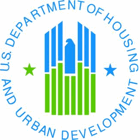 OVERVIEW: The U.S. Department of Housing and Urban Development uses Rehabilitation Mortgage Insurance to encourage lenders to make mortgage credit available to borrowers who would not otherwise qualify for conventional loans on affordable terms (such as first-time homebuyers) and to residents of disadvantaged neighborhoods (where mortgages may be hard to get). It enables homebuyers and homeowners to finance both the purchase (or refinancing) of a house and the cost of its rehabilitation through a single mortgage – or to finance the rehabilitation of their existing home. The extent of the rehabilitation covered by Section 203(k) insurance may range from relatively minor (though exceeding $5000 in cost) to virtual reconstruction: a home that has been demolished or will be razed as part of rehabilitation is eligible, for example, provided that the existing foundation system remains in place. The types of improvements that borrowers may make using Section 203(k) financing include, but are not limited to:
OVERVIEW: The U.S. Department of Housing and Urban Development uses Rehabilitation Mortgage Insurance to encourage lenders to make mortgage credit available to borrowers who would not otherwise qualify for conventional loans on affordable terms (such as first-time homebuyers) and to residents of disadvantaged neighborhoods (where mortgages may be hard to get). It enables homebuyers and homeowners to finance both the purchase (or refinancing) of a house and the cost of its rehabilitation through a single mortgage – or to finance the rehabilitation of their existing home. The extent of the rehabilitation covered by Section 203(k) insurance may range from relatively minor (though exceeding $5000 in cost) to virtual reconstruction: a home that has been demolished or will be razed as part of rehabilitation is eligible, for example, provided that the existing foundation system remains in place. The types of improvements that borrowers may make using Section 203(k) financing include, but are not limited to:
- Structural alterations and reconstruction
- Modernization and improvements to the home’s function
- Elimination of health and safety hazards
- Changes that improve appearance and eliminate obsolescence
- Reconditioning or replacing plumbing; installing a well and/or septic system
- Adding or replacing roofing, gutters, and downspouts
- Adding or replacing floors and/or floor treatments
- Major landscape work and site improvements
- Enhancing accessibility for a disabled person
- Making energy conservation improvements
TIMETABLE: This resource may be used whenever purchasing or renovating a home.
APPLICATION PROCESS: Applications must be submitted to the local HUD Field Office through an FHA – approved lending institution.
FOR MORE INFORMATION: See the program‘s homepage or contact an FHA – approved lending institution.
TAGS: funding, housing, other